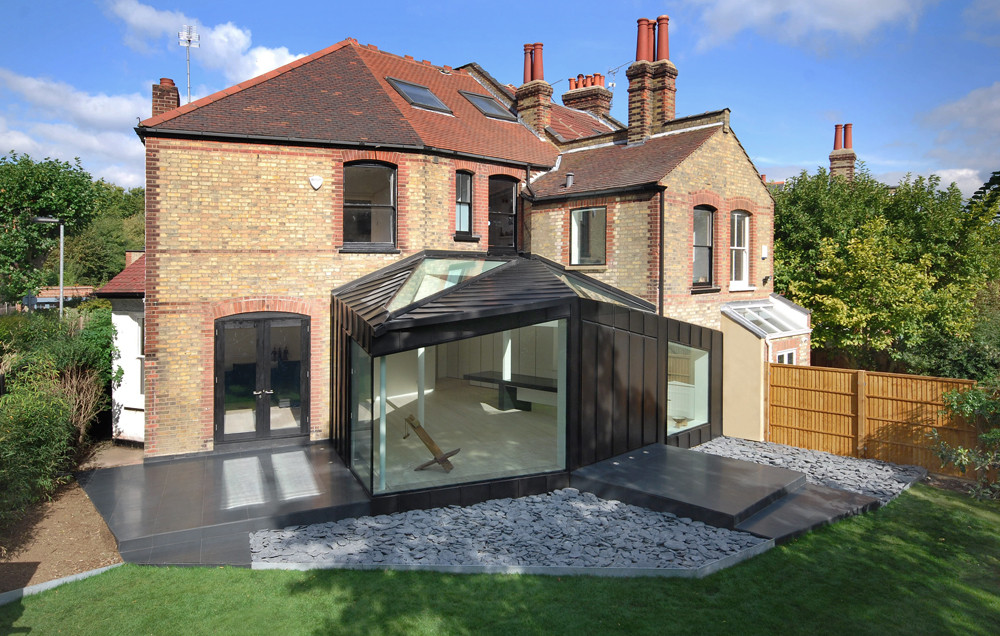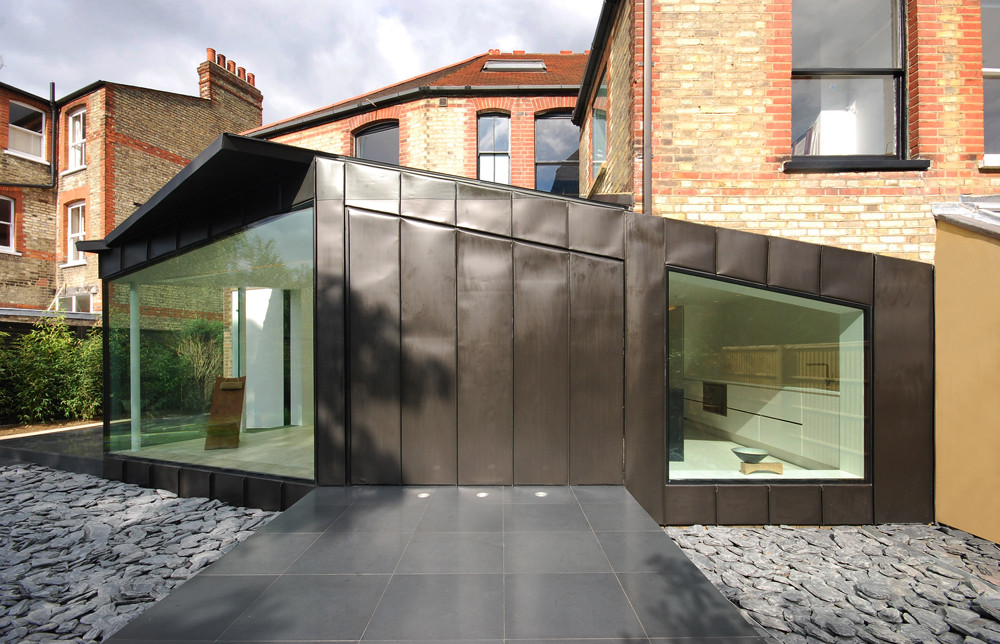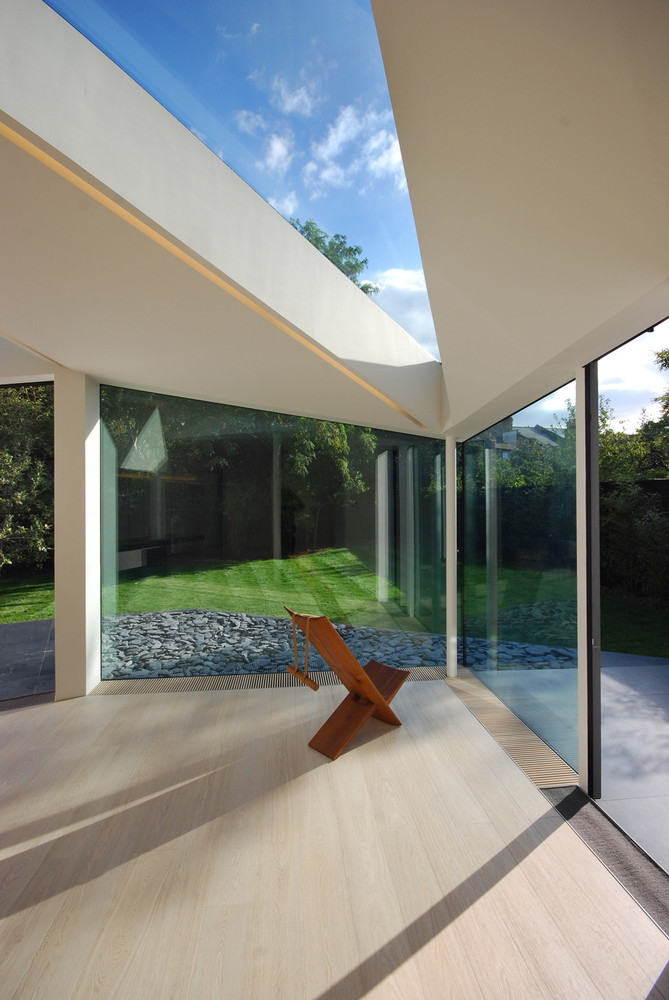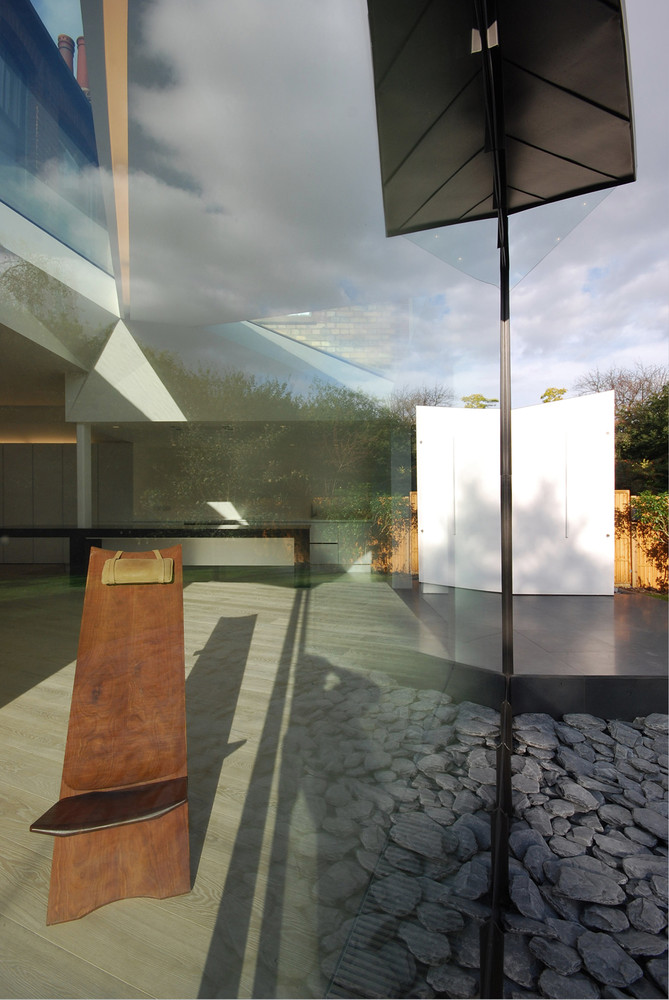Victorian Home with an Angular Modern Addition

Difference is a powerful design strategy, and what could be more different than a sleek, black and angular indoor deck extending into the backyard of one London home (in a row of similarly-styled houses) built of brick in classic Victorian style?

Look a little closer, however, and the black-walled-and-roofed area wedged into this lot works with the building and its plot remarkably well, thanks to a set of subtle design strategies by the architects of Studio Octopi.

The lines of the roof, for example, are actually extensions of existing geometries in the Victorian structure and the integration of old and new is structurally seamless despite the radical differences in style between the two. The new enclosed deck space also mediates well between the existing home and garden areas.

Fit like a missing puzzle piece into the angled patio space between two wings of the original building, this addition bridges a long-standing gap between two sides of a divided house – a division that separated living and dining room spaces since it was built. Design, as they say, is definitely in the details, which these close-up photos of structural elements and glass intersections show.

“The original builder of Park Avenue South was also the house’s first resident, who made the most of his triangular plot by allowing the side of the building to fan out to meet the line of the adjacent public footpath. On the ground floor this resulted in an additional fillet of space splitting the living and dining rooms. It was the divisional nature of this space (used as a utility room) that the client wanted to resolve. Further to improving the organization of the plan, the Client was keen to enhance the relationship between the house and garden; the existing views were restricted in both orientation and size.”
“By relocating the utility room to the heart of the house, and integrating the kitchen and dining spaces the plan was reordered and paved the way for an extension that unified the principal rooms. The design was developed through a series of folded paper sketch models exploring the nature of the triangular plot, the geometry and aspect.”
“The scale of the extension was governed by the parameters of the current permitted development legislation. Volumetric calculations determined the maximum allowable capacity, which in turn formed a boundary to the geometric exploration. The lines of the roof ridges were drawn out from two points on the rear wall of the house, whilst the elevations extended the lines of the living room and the external rear wall of the kitchen.”